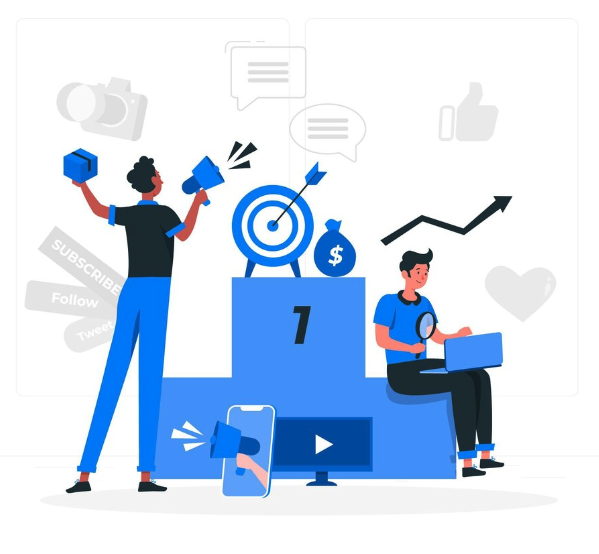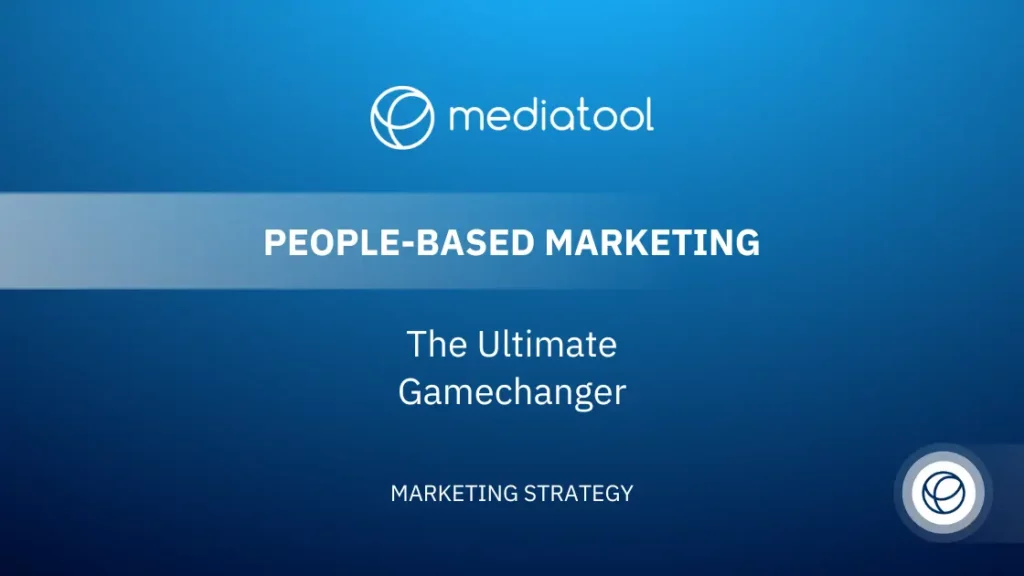The challenge of genuinely connecting with your audience has never been more difficult.
Traditional marketing methods often treat customers as numbers, leading to impersonal campaigns that fail to engage or resonate.
This one-size-fits-all approach can leave businesses struggling to break through the noise, wasting time and money.
But focusing on people-based marketing can make the difference.
By focusing on individual preferences and behaviors, people-based marketing offers a tailored strategy that addresses the issue of disconnection and actively engages each customer on a personal level.
This method ensures that your marketing efforts are seen and felt, creating meaningful interactions that drive results.
In this article we’ll break down how people-based marketing can put some life into your marketing and make every campaign more effective and every customer feel valued.
What is People-Based Marketing?
People-based marketing focuses on acknowledging the person behind every interaction with your brand, whether it’s a click, purchase, or like. This strategy involves utilizing customer data from online and offline sources to craft personalized messages that truly resonate.
By leveraging first-party data, this method ensures that your marketing campaigns directly address the needs and interests of your target audience across various platforms, such as mobile devices and print media.
How Does People-Based Marketing Work?
People-based marketing collects detailed customer data from various sources, including online and offline customer data. This process involves identity resolution, which creates a comprehensive profile of your target customers by analyzing their browsing habits and preferences across multiple devices and channels.
This approach goes beyond cross-device marketing; it targets the individuals behind the devices. Marketers can launch campaigns that genuinely connect with the audience by incorporating strategies such as CRM (Customer Relationship Management) data analysis, actionable insights, and people-based marketing platforms.
These campaigns utilize advanced tools like tracking pixels and Facebook custom audiences to ensure targeted ads reach the right prospects, enhancing the customer journey and creating meaningful connections.
People-based marketing relies on a deep understanding of consumer behavior. It utilizes data onboarding processes to merge offline and online data for a complete customer view. This enables marketers to design people-based marketing campaigns that not only capture attention but also drive engagement and conversions.
By focusing on the entire sales funnel, from awareness to the final purchase decision, this strategy allows for the efficient allocation of ad spend, ensuring that marketing efforts yield the highest return on investment.
Through strategic measurement methods and frequency strategies, marketers can fine-tune their campaigns for optimal performance, addressing any measurement gaps and maximizing the impact of every marketing dollar. The goal is to create connections with new customers and deepen relationships with current customers, turning every interaction into an opportunity for engagement and loyalty.
Data Collection: The Importance of First-Party Data

With the digital marketing landscape evolving, the shift away from third-party data underscores the critical role of first-party data in People-Based Marketing. Investments in first-party data not only facilitate the creation of personalized experiences but also offer significant financial benefits.
According to studies by Google and Boston Consulting Group, leveraging first-party data in key marketing areas can result in nearly triple the revenue and a 1.5-fold increase in cost efficiency.
This highlights the invaluable contribution of first-party data to achieving a more effective and economically advantageous marketing strategy.
Understanding First-Party Data
First-party data is collected directly from your customers through interactions with your brand, such as website visits, app usage, and purchases. This direct data is key to understanding customer preferences and behaviors, offering accurate and highly relevant insights.
The Shift to First-Party Data
- Privacy and Compliance: As privacy concerns grow and regulations tighten, first-party data offers a compliant way to gather insights directly from your customers.
- Phasing Out of Third-Party Cookies: With the decline of third-party cookies, marketers must rely more on first-party data to understand and engage their target audiences effectively.
- Enhanced Personalization: First-party data enables marketers to tailor experiences and communications, leading to higher engagement and loyalty. The effectiveness of personalization in marketing is underscored by the fact that 88% of marketers report measurable improvements from their efforts, with over half observing enhancements exceeding 10%. This statistic highlights the significant impact that tailored marketing strategies can have, driven by the insightful use of first-party data.
Leveraging First-Party Data
To capitalize on first-party data:
Improve Data Collection Methods
Implement transparent data collection practices across all your digital properties, including your website, mobile app, and social media platforms. Ensure your privacy policy is clear and accessible, informing users about what data you’re collecting and why.
Utilizing tools like web forms, surveys, and subscription sign-ups can enrich your data pool, providing a wealth of information directly from your customers. Remember, the goal is to build trust while gathering comprehensive data.
Analyze for Insights
Utilize advanced analytics tools and techniques to sift through the collected data, identifying your customers’ patterns, preferences, and behaviors. This step involves deep diving into the data to uncover valuable insights such as purchase histories, browsing habits, and engagement rates.
By integrating CRM data and consumer technology association guidelines, you can better understand your audience, turning raw data into actionable insights that guide your marketing decisions.
Personalize Marketing Efforts
Armed with insights from your data analysis, craft personalized marketing messages, offers, and content that resonate with individual customers. This could mean segmenting your audience based on their interests, purchase history, or engagement level and tailoring your communications to meet their specific needs.
Employing people-based marketing solutions like targeted ads, personalized email campaigns, and custom audience targeting on platforms like Facebook ensures that your messages are relevant and engaging, leading to higher conversion rates.
Continuously Optimize
Marketing is an ongoing process of learning and adapting. Use performance data and customer feedback to refine and optimize your marketing strategies continually. This involves testing different messages, offers, and channels to see what works best and making data-driven adjustments to improve results.
Measurement methods and tools can help identify what resonates most with your audience, allowing you to fine-tune your approach for better efficiency and effectiveness. Embrace a culture of continuous improvement, viewing each campaign as an opportunity to learn more about your customers and enhance your marketing efforts.
5 Benefits of People-Based Marketing
1. Precision Targeting
People-based marketing enables you to target your marketing campaign with high precision, moving away from broad, generic tactics. This approach ensures that your messages reach the intended audience, like precision machinery in operation, ensuring efficiency and relevance.
2. Increased Engagement
By sending personalized messages, People-Based Marketing significantly boosts audience engagement. These messages resonate personally, making prospective customers feel understood and valued and encouraging interaction and engagement with your brand.
3. Reduced Marketing Spend
This strategy focuses on targeting prospects and potential customers most likely to convert, optimizing your marketing spend. People-based marketing ensures that your budget is spent on high-value targets by directing resources to their most effective locations.
4. Faster Achievement of Business Objectives
Whether your goal is increasing sales or enhancing app downloads, People-Based Marketing helps you achieve business objectives more swiftly and effectively. This strategy streamlines your efforts toward the most impactful actions, helping you reach your goals faster.
5. Deeper Customer Insights
People-based marketing offers rich insights into customer behavior. This valuable insight allows for a better understanding of both existing customers and potential customers. This deep dive into data helps tailor your efforts to meet customer needs simultaneously, enhancing effectiveness and customer satisfaction.
How to Create a People-Based Marketing Strategy

Ready to get started? Here are the steps to craft a people-based marketing strategy:
1. Data Collection: Collect and Connect
Initiate your strategy by gathering customer data from various online and offline sources. Gathering this data while protecting personally identifiable information forms the foundation of your People-Based Marketing efforts.
2. Identity Resolution: Resolve Identities
Employ identity resolution techniques to integrate customer profiles across multiple devices, called cross-device marketing. This process is crucial for creating a unified view of your customers, enabling more effective targeting and personalization.
3. Audience Segmentation: Segment and Target
Divide your audience into specific segments based on behaviors, preferences, and purchase histories. This segmentation allows for more targeted and relevant marketing efforts, ensuring that the right ad reaches the right audience.
80% of companies practicing audience segmentation have seen a rise in their sales figures, emphasizing the effectiveness and tangible benefits of adopting such targeted marketing strategies.
4. Personalized Communication: Craft Personalized Messages
Leverage the insights gained from your data to develop ads and content that directly address the needs and interests of your target audience. This step is about creating meaningful connections through people-based advertising, making each communication feel personal and relevant.
It’s important to note that studies have shown personalization can lead to a significant revenue boost, typically between 10 to 15 percent, highlighting the substantial impact of tailored messaging on business outcomes.
5. Continuous Improvement: Measure and Optimize
Monitor the performance of your campaigns, using data and feedback to refine and improve your approach continuously. This ongoing optimization process ensures that your marketing efforts remain effective and align with your audience’s ever-changing preferences and behaviors.
By incorporating these strategies and focusing on elements like targeting devices, employing a people-based marketing platform, and understanding the importance of media mixes, you can effectively engage single-channel shoppers, utilize phone numbers for direct communication, and ultimately convert every potential customer with the right ad.
This holistic approach ensures that your People-Based Marketing strategy is comprehensive and aligned with modern marketing best practices, delivering campaigns that truly resonate.
Conclusion
People-based marketing is a beacon of hope in the crowded and impersonal digital marketplace. By prioritizing individual customer preferences, behaviors, and data, this strategy brings marketing back to its most fundamental purpose: building meaningful connections. The journey from broad, undirected efforts to targeted, impactful campaigns is a necessary evolution and a return to marketing’s core values.
Implementing the principles of People-Based Marketing not only solves the problem of disconnection but also paves the way for more engaging, efficient, and effective marketing practices. Embrace this approach, and watch as your marketing efforts transform into valuable conversations, fostering loyalty and driving business success in the digital age.





